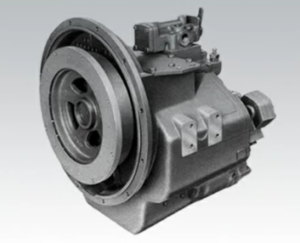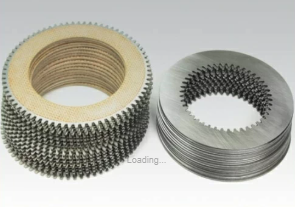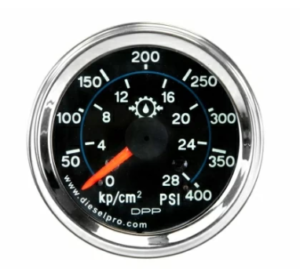

Parts Catalog for Twin Disc MG5091 Marine Transmissions
Rebuilt Twin Disc MG5091 Marine Transmissions
Plate Kit For Twin Disc MG5091 Marine Transmission
Gasket Kits For Twin Disc MG5091 Marine Transmission
The Twin Disc MG-5091 Marine Gear is a rugged, hydraulically-actuated transmission built for continuous-duty performance in the world’s toughest marine conditions. While it’s engineered for reliability, even the best marine gearboxes can experience performance issues over time — especially in commercial applications involving frequent gear shifts, heavy propulsion loads, and prolonged high-RPM operation.
Timely troubleshooting is critical. If symptoms are identified early, many issues can be resolved with minimal downtime and cost. Left unchecked, however, problems like slippage, overheating, or oil pressure loss can result in catastrophic damage, including total clutch pack failure or gearbox seizure.
This comprehensive guide provides a complete troubleshooting reference tailored to the Twin Disc MG-5091, including common symptoms, probable causes, and diagnostic methods, along with tools required and real-world tips to isolate and resolve issues efficiently.
Common Symptoms and Probable Causes for Twin Disc MG-5091 Marine Gear

Early detection and correct diagnosis of symptoms can save thousands in repair costs. Below is a breakdown of the most common signs of trouble associated with the MG-5091, including what to look for and what could be causing the issue.
1. Gear Slippage
What it looks like:
- Engine RPM increases without corresponding vessel movement
- Sluggish acceleration despite high throttle
- Temporary engagement, followed by loss of drive
- Inconsistent or delayed shift engagement
Common Causes:
Cause |
Description |
| Low oil pressure | Insufficient pressure to fully actuate clutch |
| Worn clutch plates | Friction material worn beyond minimum spec |
| Contaminated oil | Debris, water, or degraded fluid causing slippage |
| Incorrect oil viscosity | Oil too thin to provide adequate pressure |
| Hydraulic valve failure | Faulty control valve, stuck piston, or bad solenoid |
| Improper installation | Misaligned output shaft or damaged coupling |
Action Steps:
- Check oil level and pressure at idle and full load.
- Inspect fluid condition for discoloration or burnt odor.
- Perform clutch clearance test if rebuild suspected.
- Replace worn or glazed clutch plates with a rebuild kit.
- Verify hydraulic valve spool operation with manual override or electric testing.
Pro Tip: Do not operate the vessel while slippage is present. Continued use can overheat clutches, warp pressure plates, and contaminate the fluid.
2. Overheating
What it looks like:
- Oil temperature exceeds 200°F (93°C)
- Pressure fluctuates or drops under load
- Transmission warning alarm sounds
- Burnt smell from oil dipstick
- Clutch engagement becomes erratic
Common Causes:
Cause |
Description |
| Restricted oil cooler flow | Plugged seawater line, debris inside cooler |
| Low oil level | Not enough fluid to remove heat |
| Worn oil pump | Reduced flow rate and pressure |
| Constant clutch slippage | Internal friction generates heat |
| Wrong oil viscosity | Improper shear strength under temperature |
Action Steps:
- Inspect seawater intake and flush cooler.
- Check oil level and top off with SAE 30 or 40 non-detergent oil.
- Use an infrared thermometer to validate gauge readings.
- Examine oil color: dark brown or black suggests overheating.
- Pressure test the oil pump if flow rates are in doubt.
Tip: Install a temperature gauge with alarm set to 195°F for real-time monitoring.
3. Abnormal Noise
What it sounds like:
- Metallic grinding during operation
- High-pitched whining under load
- Clunk or rattle during gear shifts
- Vibrational “hum” increasing with RPM
Common Causes:
Noise Type |
Probable Cause |
| Grinding | Damaged gears or broken clutch hubs |
| Whining | Cavitation in pump or oil foaming |
| Rattling | Loose output flange bolts or worn coupling |
| Clunk | Improper shift engagement or misaligned shaft |
Action Steps:
- Run engine at idle and listen with a mechanic’s stethoscope.
- Check coupling bolts for tightness (torque to spec).
- Drain oil and inspect magnetic plug for metal debris.
- Inspect shaft alignment (TIR ≤ 0.003” recommended).
- Perform end-play test on output shaft for bearing condition.
Vibration-related noise often starts subtly but grows over time. Log unusual noises and correlate them with operating RPM and gear.
4. Loss of Oil Pressure

What it looks like:
- Low or zero reading on oil pressure gauge
- Warning light or alarm
- Transmission fails to shift or stay engaged
- Abnormal heat buildup
- Visible oil leaks
Common Causes:
Cause |
Description |
| Low oil level | Not enough oil in reservoir |
| Clogged filter | Restricts pump flow |
| Worn pump gears | Reduced hydraulic volume |
| Stuck pressure relief valve | Prevents pressure buildup |
| Internal leakage | Failed clutch piston seals or cracked housing |
Action Steps:
- Confirm oil level on dipstick.
- Replace external filter or clean suction screen.
- Inspect pressure port with manual test gauge.
- Monitor pressure rise during warmup—should exceed 100 psi at load.
- If pressure is erratic, perform full hydraulic system inspection.
Caution: Never run the MG-5091 under load with low pressure. You risk total clutch pack failure in minutes.
Diagnostic Tips for Twin Disc MG-5091 Marine Gear

Technician uses a starrett dial indicator to measure the backlash between the gears on a Detroit Diesel engine.
Once symptoms are identified, the next step is effective diagnosis. Proper tools, techniques, and a structured approach are essential to accurately isolate the issue without unnecessary part replacements or teardown.
Required Diagnostic Tools
Having the right tools on hand ensures safe and effective diagnostics.
Basic Tools:
- SAE socket set and torque wrenches
- Feeler gauges and straightedges
- Drain pan and oil catch container
- Oil fill pump
- Flashlight and inspection mirror
Specialized Tools:
- Dial indicator with magnetic base: for alignment and shaft runout checks
- Hydraulic test gauge (0–300 psi): for pressure port readings
- Infrared thermometer: to verify oil and housing temperature
- Stethoscope: for internal noise pinpointing
- Endoscope camera: for internal visual inspections
- Clamp-on ammeter or multimeter: for shift solenoid diagnostics (if electric shift)
Consumables:
- Fresh oil (SAE 30 or SAE 40 non-detergent)
- Approved oil filters
- Thread locker, gaskets, seals
- Oil sample bottle (for lab testing)
Step-by-Step Diagnostic Process
Below is a systematic process to diagnose most common issues with the MG-5091:
1. Visual and Oil Inspection
- Check oil color and smell:
- Dark or burnt = overheating
- Milky = water intrusion
- Metallic sparkle = internal wear
- Clean around seals and flanges to identify fresh leaks
- Check oil level cold and hot (thermal expansion matters)
2. Pressure Testing
- Connect hydraulic test gauge to designated pressure port
- Record pressure:
- Idle (Neutral): 40–60 psi
- Forward/Reverse under load: 120–250 psi
A drop of 20+ psi from spec may indicate a pump or internal leak issue.
3. Shaft and Coupling Alignment Check
- Mount dial indicator on output shaft flange
- Rotate and measure face and rim runout
- Acceptable limit: ≤ 0.002″ face, ≤ 0.003″ rim
Misalignment often presents as vibration or uneven clutch wear.
4. Noise Localization
- Use a mechanic’s stethoscope to listen at:
- Input bearing area
- Output flange
- Valve body
- Cooler return lines
High-frequency whining typically localizes near the pump or hydraulic passages.
5. Control System Test
- If shift response is delayed or fails:
- Check for broken cable or bent linkage
- If electronic, test solenoid resistance (2–5 ohms typical)
- Activate shift manually to isolate valve issue
Manual override (if available) can help rule out external control failure.
How to Isolate Internal vs. External Problems
Sometimes it’s unclear if a symptom is caused by something inside the gearbox or by external systems (controls, oil cooler, engine).
Clues It’s an Internal Issue:
- Metal in oil
- Sudden performance loss without control changes
- High pressure spike followed by drop
- Slipping in both forward and reverse
Clues It’s an External Issue:
- Intermittent operation (suggests control wiring)
- Shift lever feels loose or unresponsive
- Low pressure but no oil contamination
- Cooler line blockage or collapsed hose
Pro Tip: Disconnect the shift control and operate manually at the lever to rule out external interference.
When to Rebuild
If the following signs are present, internal wear or damage is likely:
- Clutch slippage despite correct pressure
- Repeated overheating even after cooler cleaning
- Visible scoring on shaft or coupling flanges
- Loud internal rattling or grinding
- More than 0.006″ shaft end play
- Significant metal particles in oil
Summary
Troubleshooting Guide for Twin Disc MG-5091 Marine Gear
The Twin Disc MG-5091 Marine Gear is engineered for endurance — but like all mechanical systems, it will wear over time, especially under continuous-duty marine conditions. Knowing how to troubleshoot issues quickly and accurately is essential for any marine technician, fleet operator, or vessel owner.
Top Troubleshooting Takeaways:
- ✅ Gear slippage is often caused by low pressure, worn clutches, or wrong oil
- ✅ Overheating typically points to oil cooler restrictions or fluid degradation
- ✅ Abnormal noise must be investigated early to avoid gear damage
- ✅ Loss of oil pressure can result from filter blockage, pump wear, or leaks
- ✅ Use proper tools like hydraulic gauges and dial indicators for precise diagnosis
A structured, methodical approach avoids guesswork, prevents unnecessary parts replacement, and ensures fast, effective repair.

Rebuilt Twin Disc MG5091 Marine Transmissions
Plate Kit For Twin Disc MG5091 Marine Transmission
Gasket Kits For Twin Disc MG5091 Marine Transmission
Videos About Twin Disc Transmissions
6 Reasons Your Twin Disc Transmission Has Low Oil Pressure
7 Reasons Your Twin Disc Transmission Is Overheating
3 Reasons Your Clutch Plates in Your Twin Disc Transmission Are Making Excessive Noise
Bull Gear On A Twin Disc Transmission
Rebuilt Twin Disc Transmissions



 Free US Calls: 1-888-433-4735
Free US Calls: 1-888-433-4735 International: 305-545-5588
International: 305-545-5588